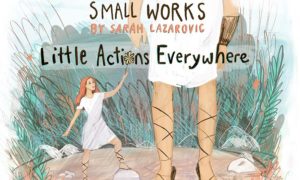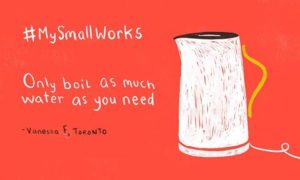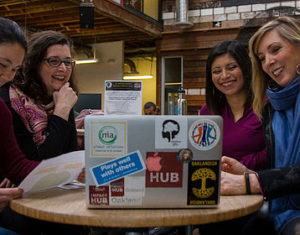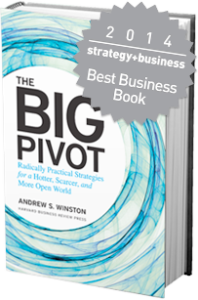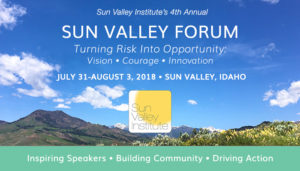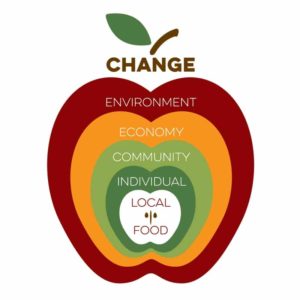Sustainability
Shhhhhh…the trees are speaking.
November 8, 2019Robin Wall Kimmerer:
In the old times, our elders say, the trees talked to each other. They’d stand in their own council and craft a plan. But scientists decided long ago that plants were deaf and mute, locked in isolation without communication. The possibility of conversation was summarily dismissed. Science pretends to be purely rational, completely neutral, a system of knowledge-making in which the observation is independent of the observer. And yet the conclusion was drawn that plants cannot communicate because they lack the mechanisms that animals use to speak. . . . But pollen has been carried reliably on the wind for eons, communicated by males to receptive females to make . . . nuts. If the wind can be trusted with that fecund responsibility, why not with messages?
There is now compelling evidence that our elders were right—the trees are talking to one another. They communicate via pheromones, hormonelike compounds that are wafted on the breeze, laden with meaning. Scientists have identified specific compounds that one tree will release when it is under the stress of insect attack—gypsy moths gorging on its leaves or bark beetles under its skin. The tree sends out a distress call: “Hey, you guys over there? I’m under attack here. You might want to raise the drawbridge and arm yourselves for what is coming your way.” The downwind trees catch the drift, sensing those few molecules of alarm, the whiff of danger. This gives them time to manufacture defensive chemicals. . . . The individual benefits, and so does the entire grove. Trees appear to be talking about mutual defense. . . . There is so much we cannot yet understand with our limited human capacity. Tree conversations are still far above our heads.
Some studies of mast fruiting have suggested that the mechanism for synchrony comes not through the air, but underground. [1] The trees in a forest are often interconnected by subterranean networks of mycorrhizae, fungal strands that inhabit tree roots. The mycorrhizal symbiosis enables the fungus to forage for mineral nutrients in the soil and deliver them to the tree in exchange for carbohydrates. The mycorrhizae may form fungal bridges between individual trees, so that all the trees in a forest are connected. These fungal networks appear to redistribute the wealth of carbohydrates from tree to tree. A kind of Robin Hood, they take from the rich and give to the poor so that all the trees arrive at the same carbon surplus at the same time. They weave a web of reciprocity, of giving and taking. In this way, the trees all act as one because the fungi have connected them. Through unity, survival. All flourishing is mutual.
Fr. Richard Rohr, Center for Action & Contemplation:
‘For too long science and faith fell into the “sin of certainty,” each claiming Truth only for themselves and ignoring the beautifully symbiotic relationship that exists between them. Scientists like Robin Wall Kimmerer are an essential part of the Great Turning, dissolving the artificial binaries that have walled them off from one another. May we all have minds and hearts open enough to integrate the wisdom of our spiritual elders.’
Are trees social beings? In this international bestseller, forester and author Peter Wohlleben convincingly makes the case that, yes, the forest is a social network. He draws on groundbreaking scientific discoveries to describe how trees are like human families: tree parents live together with their children, communicate with them, support them as they grow, share nutrients with those who are sick or struggling, and even warn each other of impending dangers. Wohlleben also shares his deep love of woods and forests, explaining the amazing processes of life, death, and regeneration he has observed in his woodland.
After learning about the complex life of trees, a walk in the woods will never be the same again.
Little things do matter.
September 14, 2018Sarah Lazarovic
“I sign petitions. I refuse plastic bags. I try to eat mostly vegetables. I turn off the light when I leave a room. I am one of those people whom other people roll their eyes at. So I was delighted when fun illustrator Sarah Lazarovic suggested a regular YES! feature called Small Works, which would prove—charts! science!—that our little individual actions really do help create big changes.
P.S. We want to know what your small actions are! Sarah will select a few to illustrate and show you how important your small works are.”
SVI: Where Convention and Opportunity Meet
August 7, 2018Who do your dollars support?
Research banks and credit cards to discover dollars supporting and contributing to our changing climate, considering corporations shifting capital flows to reduce risk and optimize opportunity.
Julie Shafer, Head of Purpose Investments & Philanthropy, BNP Paribas/Bank of the West
Ivan Frishberg, Vice President for Sustainable Banking, Amalgamated Bank
Kristin Hull, Founder and CEO, Nia Impact Capital
Capital is mobilizing to solve global challenges and finance local resilience. Research how capital for impact and how corporations and investors, from the global to the local scale are working to bring trust and decentralized solutions back into finance.
https://www.amalgamatedbank.com
Nia:
[nee-ah] (Swahili origin)
intention, purpose
Nia Impact Capital designs portfolios where financial returns and social impact work hand-in-hand.
https://www.niaimpactcapital.com
‘Nia Impact Capital announced the launch of its women-led Registered Investment Advisor (RIA) dedicated to helping wealth management professionals meet the growing demand for impact investing solutions.’
THE IMPERATIVE: THE NEED FOR THE BIG PIVOT
The business world is facing unprecedented change. The mega trends that are changing the world in profound ways present new risks and opportunities for companies of all sizes and in all sectors. The World Economic Forum’s 2014 Global Risks survey asked the world’s business and political leaders to rank their biggest concerns. The top 10 global risks all fell into two categories: economy-wide concerns (fiscal crises, unemployment, inequity) and climate and natural resources (water scarcity, the risk of the world not addressing climate change, and more extreme weather). In addition, other fundamental global shifts, particularly the transparency that technology now enables, are putting companies under a powerful microscope and forcing them to answer new questions from customers, consumers, communities, governments, and employees.
http://www.andrewwinston.com/eco-strategies/
SVI: Where Convention and Opportunity Meet
August 3, 2018Initial takeaways from the 2018 Sun Valley Forum:
Re-invent impact.
The media promotes crazy extremes; the changing climate is not a political ideology.
Time is imperative.
“Stop thinking in silos.” -Julie Wrigley
407
Climate Mayors — the national coalition of 407 U.S. Mayors dedicated to pursuing solutions to global warming — denounces this unprecedented attack on both the environment and states’ rights, and vows to continue moving forward on transportation policies that help reduce the impact of climate pollution.
“I promise to leave the world better than I found it.”
The authors of Natural Capitalism say that these choices are possible and such an economy would offer a stunning new set of opportunities for all of society, amounting to no less than the next industrial revolution. The book has many practical suggestions for companies interested in a sustainable future.
According to the authors, the “next industrial revolution” depends on the espousal of four central strategies: “the conservation of resources through more effective manufacturing processes, the reuse of materials as found in natural systems, a change in values from quantity to quality, and investing in natural capital, or restoring and sustaining natural resources.
We win or die by our culture; we are everyday change makers.
#ClimateOptimist
The Climate Optimist Manifesto:
“I believe we can solve climate change.
I will shine a light on solutions, share my optimism & take positive action.”
“There isn’t enough hope–we have to keep hope alive”
“Martin Luther King didn’t say, ‘I have a nightmare.’ He said, ‘I have a dream.'”
BlessedTomorrow.org
Climate Change Mitigation and Advocacy in 2018 and Beyond
by Anita Fete Crews
6.14.18
On May 2, Blessed Tomorrow and Auburn Seminary co-hosted the 2018 National Climate and Faith Leadership Forum, a gathering of nearly 50 faith leaders exploring how to increase climate change mitigation and advocacy activities across the country. Participants represented a diverse group of faith institutions and faith-based organizations, shared best practices, and discussed how to catalyze new, bolder, and broader efforts such as committing to 100% clean energy. Faith organizations and leaders are increasingly adopting climate change as a top priority, and embracing care for God’s creation as part of their faith identity and moral responsibility.
http://blessedtomorrow.org/blog/climate-change-mitigation-and-advocacy-2018-and-beyond
“Vote with your fork.” -Ali Long
“Local Food Alliance…is on and pushing the leading edge of dynamic social and economic changes that are increasingly important in an ever-widening circle of acceptance.” – Larry Schoen, Blaine County Commissioner
Senator Cory Booker (D) spoke with Founding Executive Director Aimee Christensen at the first Sun Valley Forum four years ago. On Friday, August 2nd, at the Netroots National Annual Conference he shared:
“No matter how powerful corporate greed and corporations might be getting, the power of the people is greater than the people in power.”
And this gives us hope.
[More from the forum soon–check this space.]



